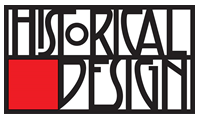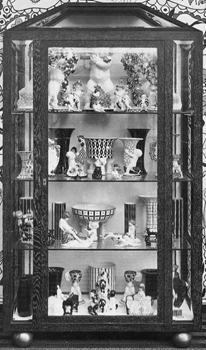Product Description
Michael Powolny / Wiener Keramik Vienna Secession “Putto” vase c.1910


MICHAEL POWOLNY (1871-1954) Austria
BERTOLD LÖFFLER (1874-1960) Austria
WIENER KERAMIK Vienna
Putto mit Füllhornvase c. 1910
Glazed white earthenware handpainted with black enamel.
Marks: MP (impressed artist’s monogram), WK (impressed firm logo in a square)
Exhibited: Frühjahrsausstellung Österreichischer Kunstgewerbe in Österreichisches Museum für Kunst und Industrie (today the MAK museum), Vienna, 1912.
Model illustrated: Deutsche Kunst und Dekoration, Vol. XXXI, October 1912 March 1913, n.p.; Deutsche Kunst und Dekoration, Vol. XXXIII, October 1913-March 1914, n.p.; The Studio Yearbook of Decorative Art 1913 (London, 1913), p. 218; Wiener Keramik, L.W. Rochowanski (Leipzig and Wien: Thyrsos Verlag, 1923) n.p.; Michael Powolny: Keramik und Glas aus Wien 1900 bis 1950, Elisabeth Frottier (Vienna: Böhlau Verlag, 1990) 1912 photograph with the horse sculpture displayed in vitrine from Frühjahrsausstellung Österreichischer Kunstgewerbe, illus. 4, p. 15, illus. 16, p. 33, cat. no. WV 132.
H: 8 9/16″ x Dia: 5 3/4″
Price: $8,000
Michael Powolny / Wiener Keramik Vienna Secession “Putto” vase c.1910
AMPHORA ART POTTERY Turn-Teplitz, Austria
Organic vase c. 1900
Glazed earthenware
Marks: AMPHORA (in oval), AUSTRIA (in an oval), 8026, 41
For more information see: Deutsche Kunst und Dekoration, ( March 1901) pp. 346-349; Sammlung Bröhan: Kunsthandwerk, Glas, Holz, Keramik,Vol. 1 Band II (Berlin: Bröhan Museum, 1976), pp. 284-293.
H: 6 3/4″ x W: 5″ x D: 3 1/4″
Price: $2,350
